Unlike those living in the North, Florida homeowners can enjoy a beautiful lawn year-round. It’s one of the benefits of living in a year-round, subtropical climate.
Growing a beautiful lawn in Florida comes down to choosing the best type of grass to grow in Florida. Some easy-to-grow grasses for the Florida climate are St. Augustine, Bahia, Bermuda, and Centipede.
Having a heathy lawn not only allows you less work and more enjoyment of your outdoor space, but also increases your home’s value. It also helps prevent erosion, traps pollutants from running into ground water and increases oxygen.
The Best Grasses for Florida
Florida gardeners have a variety of choices in grasses that grow well in the state. Turfgrass thriving in Florida are warm-season varieties, meaning they grow well in the state’s mild climate. Some of the best types and their notable characteristics are listed below.
St. Augustine
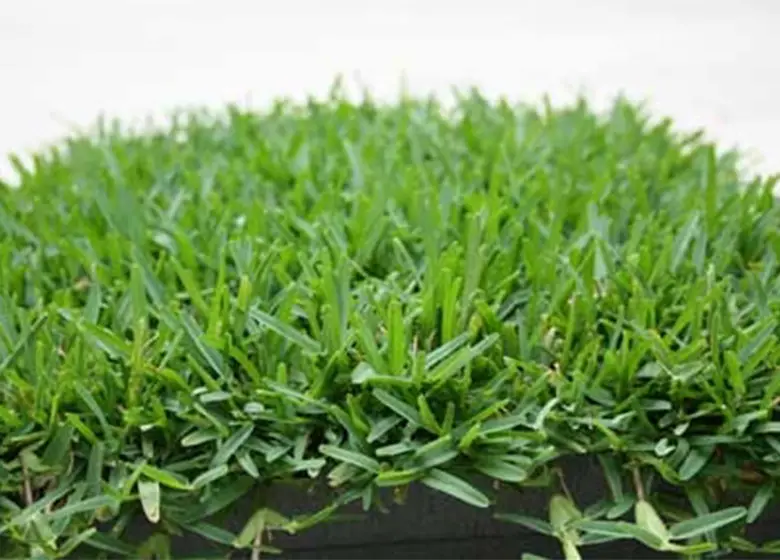
Holding the honor of being the most popular used turfgrass in Florida, St. Augustine (Stenotaphrum secundatum) is thought to be native to coastal regions of the Mediterranean and the Gulf of Mexico. The grass stands up to the state’s hot and humid climate without skipping a beat and is salt-tolerant.
Forming a thick and dense mat of thick green to bluish-green blades, the turfgrass has a good adaption the Florida’s soil conditions and climate. It quickly establishes itself and sod, sprigs or plugs are readily available to create the lawn.
An advantage to St. Augustine is there are multiple cultivars available that thrive in full sun to shady conditions. However, it holds disadvantages too. The grass is high-maintenance when it comes to moisture, pest- and disease-control. It also doesn’t tolerate constant wear well, but it does produce a beautiful lawn.
Bahia grass
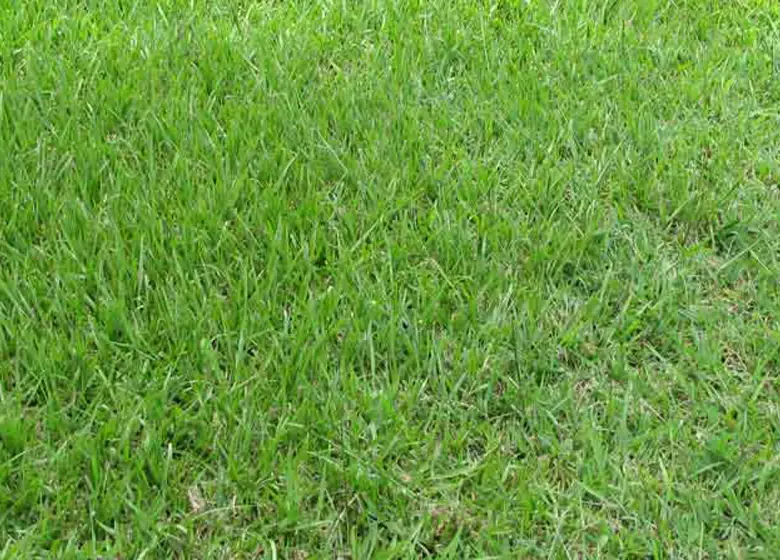
Bahiagrass (Paspalum notatum) is a low-maintenance turfgrass that was originally used in pastures but now is utilized in home lawns. The grass thrives in acidic soils and stands up to drought and will also grow in infertile sandy soils that are so common in Florida.
The deep-rooted grass forms thin green blades and doesn’t form a thick and dense mat like other warm-season varieties. However, it doesn’t require much moisture or fertilizer to produce healthy growth. Bahiagrass is available in seed and sod.
Bermuda grass
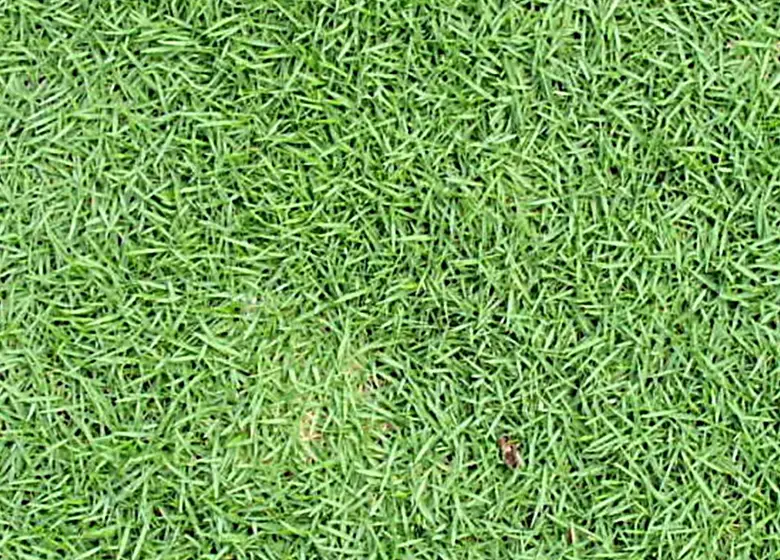
Another warm-season grass forming a thick mat and standing up to Florida’s conditions is Bermudagrass (Cynodon spp.). The turfgrass quickly spreads creating a finely textured mat of medium to dark green grass blades. It’s the grass most commonly used on athletic fields.
Bermudagrass is available in seed, sprigs, plugs and sod and does have a tendency to go dormant in winter. The grass stands up well to salt, drought and wear and tear. However, it can be high-maintenance when it comes to pest-control.
Centipede grass
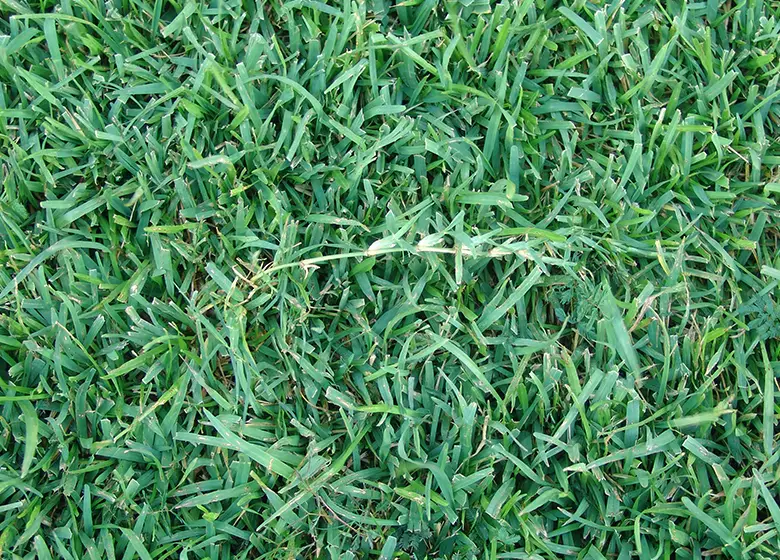
A turfgrass thriving in North and Central Florida, centipedegrass (Eremochloa ophiuroides) stands up well to conditions found in those regions of the state. However, there’s now one cultivar of the turfgrass that’s been developed for use in more southern areas of the state. It’s available in sod, seeds or plugs.
Centipede grows slowly forming a medium textured grass that grows close to ground level. The grass is drought-tolerant and grows well in sandy, infertile soils as well as acidic types. It is relatively tolerant to shade. The grass can turn brown and go into dormancy when conditions are too dry. Nematodes and thatch can be problematic.
How to Choose the Right Grass for Your Lawn
As when adding any new plant to your landscape, including turfgrasses, it’s important to take into account important considerations concerning the site and the likes and dislikes of the chosen turfgrass. You are setting yourself up for disappointment and an unhealthy and lawn if you just start installing any old grass or throwing seed.
First, you should consider how you plan on using your lawn. Is your primary goal to have a lawn that’s only purpose is to look good or will it have regular activity such as foot traffic? Some turfgrasses stand up better to activity than others do.
Additionally, realize how much money and time you want to spend on its installation and maintenance. Some turfgrass is needy and requires constant maintenance, which can add up in work and money. Installing sod is costlier than installing seed.
It’s important to get to know your desired turfgrass and familiarize yourself with its likes and dislikes. Know how much light it thrives in and what type of soil. For example, you don’t want to plant a variety that requires full sun in a shadier location where its growth will be negatively affected.
Study the site where you plan on installing the grass. Familiarize yourself with the area’s climate, how much sun the area receives, as well as the soil conditions and the soil’s pH. You’ll also want to know how the area drains and does it retain water at times or stay consistently dry.
Tips for Maintaining a Healthy Lawn in Florida
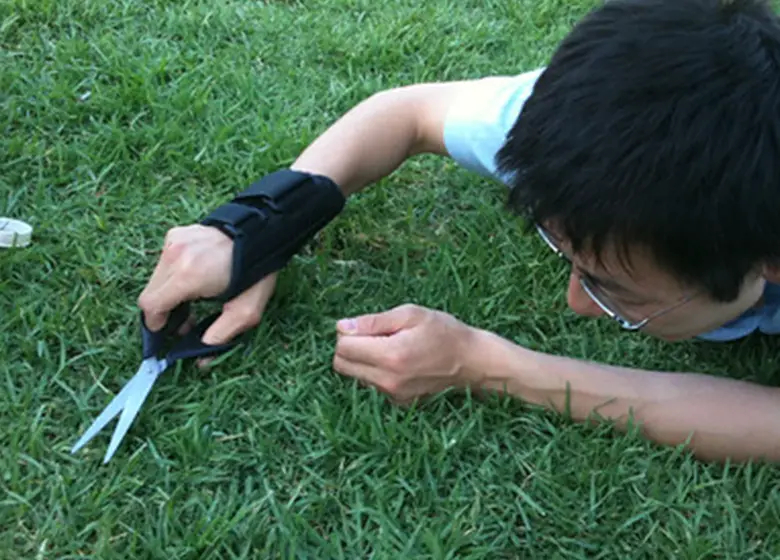
Once you’ve installed the best turfgrass that thrives in your site’s conditions, the next important step is in its proper maintenance. Properly maintained turfgrass results in a greener and healthier lawn and reduces your time and expenses.
The three most common aspects of keeping your Florida lawn green and happy is properly mowing, watering and fertilizing. Like most things in life, too much of what seems like a good thing can actually be detrimental to your turfgrass’s health. Once again, knowing what your turfgrass desires for healthy growth leads to the best and healthiest outcome.
How Often to Mow
How often you mow depends on the turfgrass type, its health and the seasonal conditions. It goes to reason that grass grows quicker during the warmer months of the year than in winter. In winter, all types of plants go through a dormant period when growth slows and turfgrass is no exception. Unhealthy lawns and those not given water will experience slow growth reducing the need to mow. During the growing season you can expect to mow weekly but during winter, you might only have to move every two to three weeks or even less, depending on the grass type.
What type of turfgrass you have also affects mowing frequency. Turfgrass like St. Augustine has a quicker growth rate than centipedegrass.
Although you can feel like you spend your life mowing during the summer in Florida, it’s a very important part of maintaining a problem-free lawn. Before you fire up the lawn mower’s engine, make sure you’re using sharpened blade, as dull blades rip the grass opening it up to pest and disease problems. It also makes the grass look bad.
Regardless of grass type, never cut off more than one-third of the blade, which means regular mowing during warmer seasons. If you happen to miss a mow, just set the mower up one additional setting higher from what’s recommended and then move it back to its regular setting on the next mow.
The mower’s height should be set to its highest position that’s recommended for your particular turfgrass. For example:
- St. Augustine – 3.5 to 4 inches for standard cultivars and 2 to 2.5 for dwarfs.
- Bahia – 3 to 4 inches
- Centipede – 1 to 2 inches
- Bermuda – 1 to 2 inches
Leaving grass clippings on the lawn returns organic nutrients back to the lawn and doesn’t contribute to thatch.
Lastly, always wear protective gear like eyewear and close-toed shoes when mowing and don’t mow while the grass is wet. Not only is it hard on your mower, but it also can be dangerous if you slip and fall.
When to Water
Of all the cultural practices when it comes to maintaining a healthy lawn, improperly watering causes the most damage. Since many areas of the state have water restrictions, training your turfgrass to be more tolerant to drought is best.
Cut back watering where it’s infrequent enough to where the turfgrass doesn’t sustain drought stress. However, when you do water be sure to do so deeply, which promotes a deeper and healthier root system. You’ll know it’s time to water when your grass experiences one of the following: the blades take on a bluish tint, they fold lengthwise or activity like walking leaves footprints in the grass.
Of course, you’ll water more frequently when outdoor conditions are hot and dry. However, in winter, you’ll only have to water every two to three weeks.
A good rule to practice is to apply 1/2 to 3/4 inch of water for each irrigation. If using an automatic sprinkler system, setting a can in each zone and timing how long it takes for them to fill to the appropriate amount let’s you know how long to run each one. Something like a tuna can works well.
How to Fertilize
Proper fertilization is another important aspect of keeping your Florida lawn beautiful and healthy. It’s always advisable to get a soil test first so you know what nutrients are needed to keep your grass lush and green. If you just installed a new lawn, wait at least one or two months before fertilizing so it doesn’t runoff because the root system isn’t developed.
Other considerations that determines how much and what product your grass requires is the type of grass, your location in the state and the size of the lawn. However, and according to the University of Florida, regardless of your turfgrass type, you should apply no more than 1-pound of nitrogen in each application.
Know what your particular species of grass requires based on whether you live in North, Central or South Florida. For example, those with St. Augustine grass in North Florida should apply two to four annual application, those in Central Florida two to five applications and in South Florida, four to six applications.
Always use the recommended amounts, as more isn’t better and can actually open your turfgrass up to pest and disease problems. After applying, always water the fertilizer into the ground.
Common Lawn Pests Seen in Florida
There are a few insects that inhabit Florida turfs and some are beneficial and cause no harm and only a couple require quick identification and treatment. The best thing you can do to maintain a pest-free lawn is by properly maintaining it. This includes proper mowing, irrigating and fertilizing. A healthy turf is better able to fend off a pest attack.
Some of the more common lawn pests include:
- Chinchbugs: Biggest insect pest to St. Augustinegrass. The black insects have white wing patches and are around 3/16 inches long. The insects reside in the thatch and such juices from the grass eventually killing it. Damage shows up as growing brown patches.
- White Grubs: Immature scarab beetles, they feed on the turfgrass roots causing it to thin and eventually brown and die. Affected areas of turf feels soft and spongy.
- Fire Ants: Imported from South America, fire ants build their mounds in the lawn, bring the soil to the surface. They cause a painful sting.
- Fall Armyworms, Cutworms and Grass Loopers: Moths lay eggs in the turf and the caterpillars hatch eating the grass blades. The damage shows up a circular dead spots or depressions. The caterpillars have striped sides and are brown to green.
- Mole Crickets: Florida is home to three mole crickets that aren’t native to the region. Adult insects are around 1.5 inches long, brown and have long front legs used for digging. The insects create underground tunnels up to 20 feet long where they feast on the grass roots and blades creating bare patches.
Quick identification of the pest and treatment is always your best course of action. When selecting a product to treat the problem, make sure the product is safe to use on your species of grass. Always follow package directions on amounts and frequency of use.
